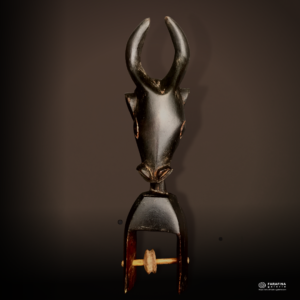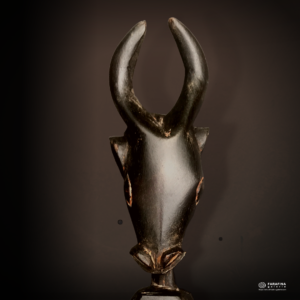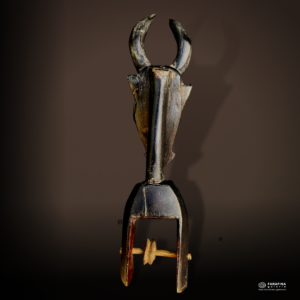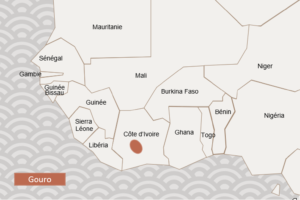Poulie métier à tisser Gouro
Gouro loom pulley
Gouro loom pulley



Référence: mb446

![]()
Poulie de métier à tisser Gouro
Superbe étrier de Poulie de métier à tisser Gouro, ancien avec avec une très belle patine d’usage.
Les Gouro sont un peuple d’Afrique de l’Ouest établi principalement au centre ouest de la Côte d’Ivoire. Il sont réputés comme sculpteurs de masques très colorés, de statuettes, de poulies de métier à tisser et de cuillères,
Dans les sociétés tribale traditionnelles, tout est religieux : la naissance, le mariage, les récoltes, l’organisation du village… La vie sociale et le sacré sont donc intimement liés. La frontière entre profane et religieux n’existe pas vraiment. Ainsi au-delà des objets de cultes (statuettes, masques), de nombreux objets du quotidien (sièges, lance-pierres, …, étriers de poulie) sont finement ouvragés et font référence aux mythes.
Dans les cosmogonies d’Afrique de l’Ouest Le tissage est un acte fondamental, directement lié au mythe fondateur et à la parole. Les poulies sont aussi l’évocation d’un mythe, d’une croyance, les tisserands utilisent souvent des poulies ouvragées, la décoration de ces objets est souvent d’un extrême raffinement. Les figurines animales des poulies représente l’animal fondateur du lignage du tisserand, qu’il est interdit de tuer et de consommer, ou un animal rappelant l’habilité et la vélocité du tisserand.
![]()
Gouro loom pulley.
Superb Gouro loom pulley stirrup, old with a very beautiful patina of use.
The Gouro are a West African people established mainly in the west-central part of Côte d’Ivoire. They are renowned as sculptors of very colorful masks, statuettes, loom pulleys and spoons,
In traditional tribal societies, everything is religious: birth, marriage, harvests, village organization… Social life and the sacred are therefore intimately linked. The boundary between secular and religious does not really exist. So beyond objects of worship (statuettes, masks), many everyday objects (seats, slingshots, etc., pulley stirrups) are finely crafted and refer to myths.
In the cosmogonies of West Africa, weaving is a fundamental act, directly linked to the founding myth and the word. The pulleys are also the evocation of a myth, of a belief, weavers often use ornate pulleys, the decoration of these objects is often extremely refined. The animal figurines on the pulleys represent the founding animal of the weaver’s lineage, which is forbidden to kill and consume, or an animal recalling the skill and speed of the weaver.

